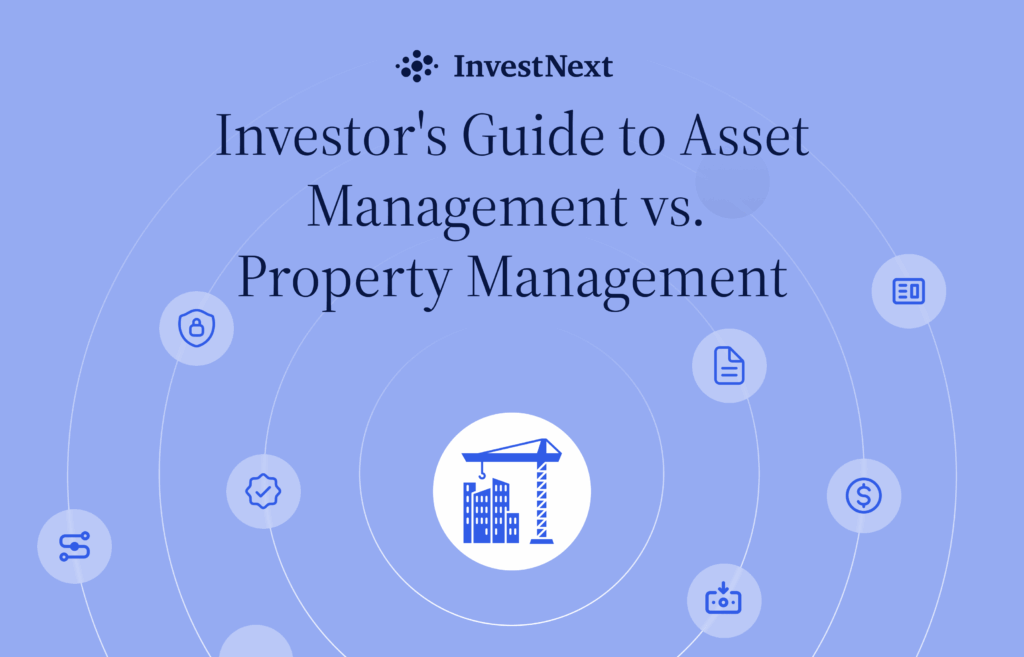Open-ended funds are gaining popularity as flexible investment vehicles that provide dynamic capabilities for real estate investment professionals.
These funds allow investors to pool their money to invest in real estate properties. They are unique in that they let investors join or exit the fund over time.
According to the Investment Company Institute, these funds are making waves in the investment world, with global regulated open-end fund assets reaching $69.17 trillion in Q1 2024.
Unlike traditional closed-end funds with fixed timelines, open-ended funds operate without a set end date. This flexibility offers advantages for both investors seeking liquidity and fund managers looking to grow their portfolios over time.
Understanding how these funds work becomes essential for professionals aiming to attract investors and manage capital effectively as the real estate market continues to evolve.
This article explores what makes open-ended real estate funds unique, how they compare to other fund types, and the key considerations for managing these dynamic investment structures.
What Are Open-Ended Real Estate Funds?
An open-ended real estate fund is a flexible investment vehicle that allows investors to pool their money to invest in real estate properties. Unlike funds with a fixed end date, these funds can continue indefinitely. They’re called ‘open-ended’ because they can accept new investments and allow withdrawals over time, subject to certain conditions.
These funds typically invest in a variety of income-generating properties, which might include:
- Office buildings in prime locations
- Well-established shopping centers
- High-quality apartment complexes
- Industrial warehouses in strategic areas
The goal is to provide steady returns while maintaining the flexibility to adapt to market changes. This structure offers several key features:
- Ongoing Capital Raising: The fund can continually accept new investments, allowing it to grow over time.
- Portfolio Diversification: As the fund grows, it can invest in multiple properties across different real estate sectors.
- Liquidity Options: Investors usually have the option to redeem their shares periodically, though this may be subject to certain restrictions.
- Long-term Perspective: Fund managers can focus on long-term value creation rather than short-term exits without a fixed end date.
For investment firms, especially those looking to scale, open-ended funds can efficiently manage multiple investments and a growing investor base. They allow for a more streamlined approach to raising capital and managing properties compared to launching individual investments for each new deal.
This structure can be particularly appealing to firms and investors who want stability and flexibility in their real estate investments. It offers the potential for steady income and capital appreciation while still providing options for portfolio adjustments over time.
Advantages of Open-Ended Real Estate Funds
Advantages for Investors
Open-ended real estate funds offer several advantages that make them an attractive investment vehicle for many investors. These funds provide flexibility and liquidity, allowing investors to enter and exit the fund periodically. This contrasts with close-ended funds, which typically have a fixed term and prohibit investors from redeeming their interests.
Open-ended funds’ indefinite term enables them to raise capital in perpetuity, while close-ended funds usually operate with a fundraising period of 12-18 months and a fixed investment period of 4-6 years. This flexibility empowers managers to optimize the timing of acquisitions and dispositions and navigate volatile markets more effectively.
Open-ended funds often invest in long-term income-generating assets, providing investors with a consistent income stream. The long-term nature also allows these funds to hold a more diverse range of assets.
Advantages for Sponsors
- Multiple Deals in a Single Vehicle: Simplify your processes and reduce filing administrative expenses from syndicating deals individually. For example:
- Reduced Legal Costs: You won’t need to purchase new legal documents for every deal. This saves money and speeds up your capital raising process, as you won’t be waiting for new legal paperwork to be completed for each investment.
- Simplified Banking: Instead of opening a new operating bank account for each deal, you can use a single operating account at the fund level. This streamlines your financial management and reduces administrative overhead.
- Continual Fundraising: Allows you to add new deals to your fund when you identify new opportunities that fit your investment criteria without the need to launch new funds or syndications.
- Capture More Investors: Offer a diversified set of assets and investment classes to reduce investor risk and appeal to a broader set of investor needs.
Disadvantages of Open-Ended Real Estate Funds
While open-ended real estate funds offer attractive benefits, they also have some disadvantages compared to closed-end funds. Investors may find it harder to predict the timeline for realized returns, as fund managers earn incentive fees partly on unrealized investments, potentially reducing their motivation to sell assets. Investors also often face lock-up periods before redemption requests are allowed.
Ownership calculations can be challenging and time-consuming without the right investment management tools. InvestNext enables sponsors to maintain their capital stack based on ownership percentages and multiple start dates, allowing investors to invest at any point during your raise. You can easily update the market value of your asset while automatically maintaining the position of previous investors – without having to create a new offering inside your investor portal.
Management and Administrative Challenges
Open-ended funds can be more challenging for fund managers to manage than closed-end funds. Balancing investor liquidity needs with the illiquid nature of the underlying assets is crucial, and redemption requests may be difficult to fulfill at times. Managers must dedicate more time and resources to managing the complex investor base in an open-ended fund.
Valuation and Pricing of Assets
The subjective nature of valuing underlying assets in open-ended funds can lead to discrepancies between the estimated and realized values. As investors can periodically redeem shares, accurate valuations are critical for fund success. In contrast, closed-end funds rely on realized values upon asset liquidation, providing a more objective approach to valuations.
Potential for Higher Operational Costs
Managing an open-ended fund may require more personnel to operate efficiently, resulting in higher operational costs compared to closed-end funds. These increased costs can negatively impact investor returns.
Accurate Distributions
Accurately calculating investor distributions and sending payments with diverse entry dates, ownership percentages, and multiple classes is time-consuming, error-prone, and comes with significant credibility risk if managed manually. InvestNext automatically tracks entry dates and ownership percentages across your entire fund to calculate accurate distributions for any operating agreement.
Comparing Open-Ended and Closed-Ended Real Estate Funds
Open-ended and closed-ended real estate funds differ in several key aspects. Open-ended funds offer investors the flexibility to enter and exit the fund periodically, while closed-ended funds typically lock in investors for the life of the fund, which can range from 10-12 years.
Investment Timeline and Liquidity
Open-ended funds have an indefinite term, allowing them to raise capital perpetually. In contrast, closed-ended funds operate with a fundraising period of 12-18 months and a fixed investment period of 4-6 years. This flexibility enables open-ended fund managers to optimize the timing of acquisitions and dispositions, navigating volatile markets more effectively.
Fee Structures
Management fees in open-ended funds are generally lower than those in closed-ended funds. Open-ended funds typically charge fees based on net asset value or contributed capital, while closed-ended funds often charge fees on capital commitments initially and on invested capital later. This could result in investors being charged fees before contributing to the fund, regardless of performance.
Investor Exposure and Risk
New investors in mature open-ended funds gain exposure to a portfolio of assets upon entry and contribution. Conversely, closed-ended funds often experience negative returns early in the investment period as they build their portfolio while charging fees from inception.
The Bottom Line on Open-Ended Real Estate Funds
Open-ended real estate funds have emerged as compelling investment vehicles. They offer investors the potential for steady returns, portfolio diversification, and the flexibility to enter and exit the fund periodically. When managed effectively, open-ended funds give sponsors more capital raising flexibility and can reduce administrative overhead.
Choosing the right technology partner for your fund can empower sponsors with more ways to raise capital, save time calculating ownership percentages based on multiple start dates, and execute accurate distributions with precision.
InvestNext’s platform of essential tools and integrated solutions enables you to build open-ended funds your way while creating a seamless experience for your investors:
· Unlimited amount of classes per project
· Custom distribution plans for operating cash flow and capital events
· Pro-rata distribution hurdle to time-weight allocation
· Distribution reinvestment
· Statements and investor portal are by default, broken down by class
If your firm is launching a fund or actively managing one, schedule a demo with InvestNext to see how our essential tools can help you raise capital without limits.
Open-Ended Real Estate Funds FAQ
What is an open-ended fund in real estate?
An open-ended real estate fund has no fixed termination date and can expand based on investor interest. This fund enables investors to continuously add new funds and periodically withdraw their investments.
What advantages do open-ended real estate funds offer?
Open-ended real estate funds are investment vehicles that continue indefinitely and can expand based on investor interest. These funds enable sponsors to raise capital with more flexibility and reduced administrative overhead – allowing sponsors to add new investors into an existing fund. Open-ended funds allow investors to continuously invest additional funds and also enable periodic withdrawals, making them flexible investment options.
Can you explain what an open-ended property fund is?
An open-ended property fund operates with a flexible capital amount and has no predetermined expiration date. Investors in these funds can buy (subscribe) and sell (redeem) their shares at any time during the fund’s existence based on the current market value of the underlying assets.
How does an open-ended fund operate?
An open-ended fund calculates the market value of its assets daily at the close of trading. For instance, a balanced fund, which invests in both stocks and bonds, determines its market value using the closing prices of its stock and bond investments for that particular day.






